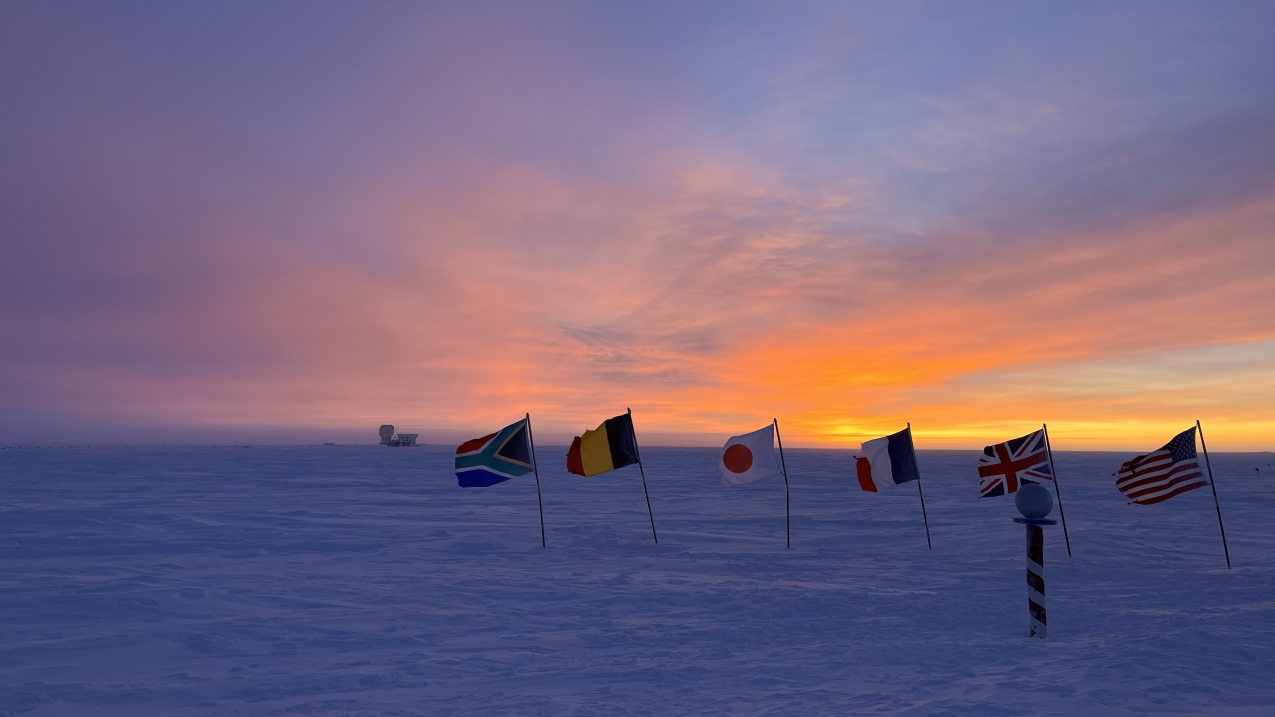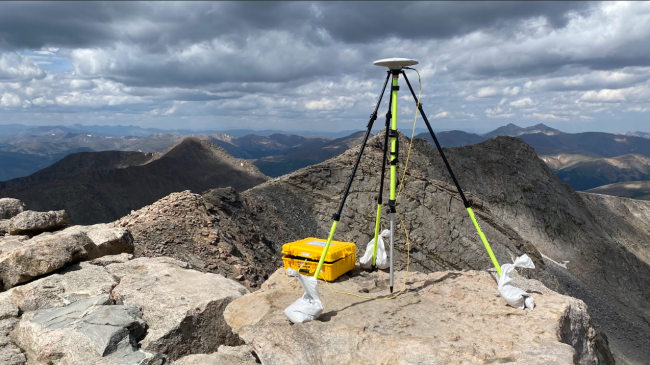
The rising sun marks the arrival of spring at the Amundsen-Scott South Pole Station, September 18, 2023. (Image credit: Margaret Hubbeling/STC and NOAA)
After six months of darkness, the return of the sun at the South Pole signals the arrival of spring in the Southern Hemisphere. For scientists at NOAA’s South Pole Atmospheric Baseline Observatory (SPO), that’s a welcome sight.
Margaret Hubbeling is one of two staff members from NOAA’s Global Monitoring Laboratory who wintered over at the South Pole.
“When I saw the first light, it felt a bit like coming out of a very long and surreal period,” Hubbeling said. “The dark period felt abnormally long and short at the same time, so it was really impactful for me to see that first bit of orange glow on the horizon.”
Hubbeling and her colleague Darrien Reichler will remain at the observatory until later this spring, when temperatures warm up enough for aircraft to operate at the South Pole bringing a new NOAA crew to take their place.
Until then, this crew will have a critical role monitoring the seasonal Antarctic ozone hole, which starts forming in September when sunlight triggers chemical reactions in the atmosphere that deplete Earth’s protective ozone layer.
About the South Pole Atmospheric Baseline Observatory
NOAA’s South Pole Observatory is located at the geographic South Pole on the Antarctic plateau at an elevation of 2837 m above sea level. The National Science Foundation provides the infrastructure for the Global Monitoring Laboratory’s scientific operations, including the Atmospheric Research Observatory and the Balloon Inflation Facility.
The South Pole has some of the cleanest air in the world, which makes it an ideal location for NOAA scientists to take long-term climate measurements including greenhouse gases like carbon dioxide, monitor air quality and track the seasonal Antarctic ozone hole every September and October (see the balloon launch video above).
Want to see for yourself what it's like at the South Pole today? Check out this live webcam.


